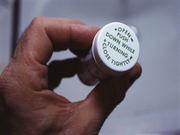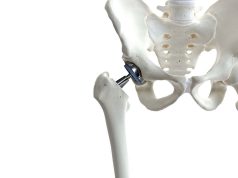Optimal length for each procedure lies between observed median prescription length and early nadir
THURSDAY, Sept. 28, 2017 (HealthDay News) — The optimal length of opioid pain medication prescription after common surgical procedures lies between the observed median prescription length and the early nadir, according to a study published online Sept. 27 in JAMA Surgery.
Rebecca E. Scully, M.D., from Harvard Medical School in Boston, and colleagues described patterns of opioid pain medication prescriptions after common surgical procedures among opioid-naive individuals aged 18 to 64 years who had undergone one of eight common surgical procedures. Using a generalized additive model with spline smoothing, they modeled the adjusted risk of refilling an opioid prescription based on the number of days of initial prescription.
The researchers found that 19.1 percent of the 215,140 individuals who underwent a procedure within the study time frame and received and filled at least one prescription for opioid pain medication also received at least one refill prescription. The median prescription lengths were four days for appendectomy, cholecystectomy, and hysterectomy; five days for inguinal hernia repair, mastectomy, anterior cruciate ligament repair, and rotator cuff repair; and seven days for discectomy. The early nadir in the probability of a refill was at an initial prescription of nine, 13, and 15 days for general surgery procedures, women’s health procedures, and musculoskeletal procedures (probability of refill of 10.7, 16.8, and 32.5 percent, respectively).
“Ideally, opioid prescriptions after surgery should balance adequate pain management against the duration of treatment. In practice, the optimal length of opioid prescriptions lies between the observed median prescription length and the early nadir,” the authors write.
Copyright © 2017 HealthDay. All rights reserved.








